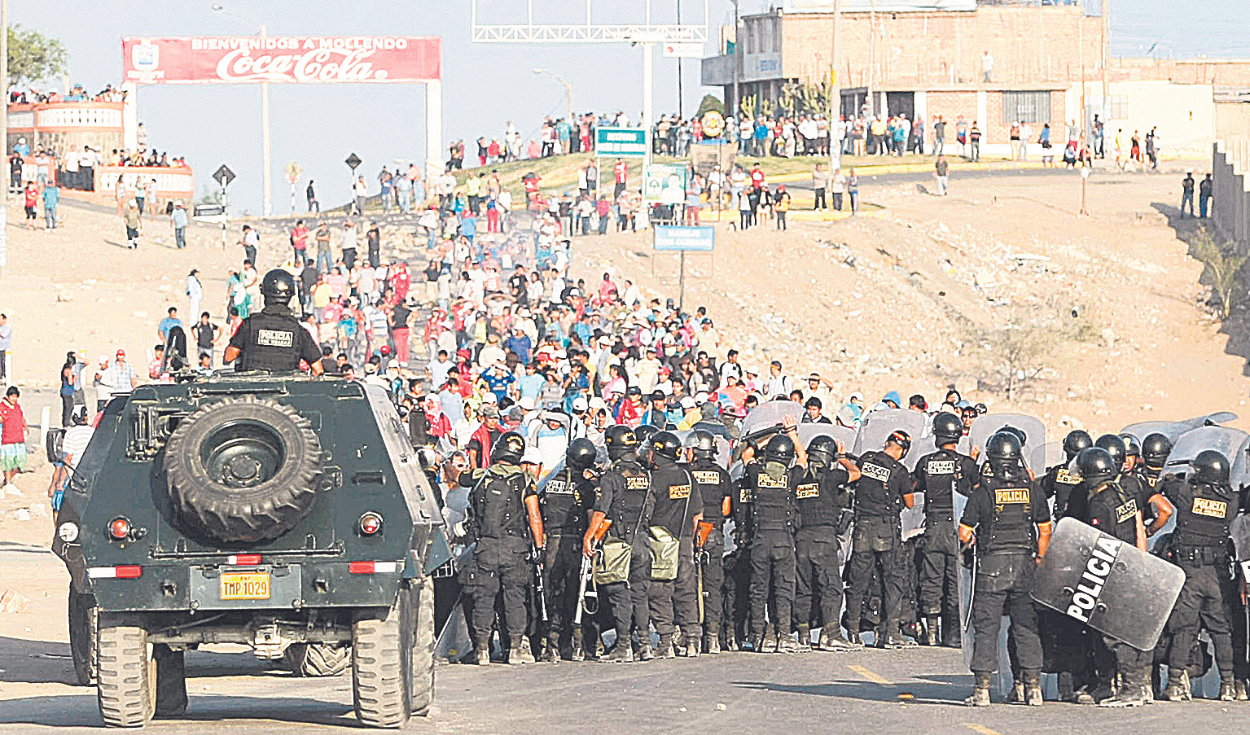
This year, 2023, will close as the highest cycle of social conflicts in the last 7 years, exceeding 220 cases, and the majority of these respond to mining activity, according to a recent report presented by the 33rd Observatory of Mining Conflicts in Peru (CMO).
The high number of conflicts in our country will be just above the record obtained during the government of the former president Pedro Pablo Kuczynski: more than 60% of them linked to environmental issues, of which, in turn, 67% originate from activity in the mines.
José de Echave, CooperAcción researcher, explains that, in recent months, some conflicts went from latent to active, such as that of Chumbivilcas (Cusco) and Cotabambas (Apurímac) in the southern mining corridor. A tense calm is broken at the same time that indices in the north skyrocket in 15 years of illegal mining. Pataz, in La Libertad, is proof of this.
“This increase in conflicts goes hand in hand with the increase in collective protest actions, which went from 232 in August to 410 in October,” says De Echave.
Epifanio Baca, coordinator of Citizen Proposal Projects, remembers that the 260 tons of copper that he placed The Bambas in 2022 they are well below the 400 tons of 2017. The losses have been partially cushioned by the price factor, but it is not enough.
That 2023 closes as the year with the most social conflicts associated with mining in number does not necessarily mean that it will be the year with the worst economic damage associated with the occupation of roads, “although it is not far from it,” anticipates Baca.
To take an example, the 57-day stoppage in Las Bambas in 2022 generated losses of US$541 million in exports and S/296 million in collections for income tax and contractual royalties.
“The areas of greatest conflict are the mining corridor in the south and the Amazon, in Loreto. They are the critical cases. The disputes around Las Bambas, Antapaccay and Hudbay have intensified as a result of the space that Pedro Castillo gave them, which empowered them to have a stronger agenda,” he says.
The double discourse of water
It must be understood that mining activity requires a lot of water for its operation. Consequently, it is normal for mines to be located near basin headwaters. It is the genesis of many of the conflicts of this type in Peru.
It is a reality in the interior of the country that is not far from materializing in the capital. Ana Leyvadeputy director of CooperAcción, warns that, despite the Government announcing the declaration of emergency due to water deficit, it is promoting the execution of the Ariana mine in the most important water producing area for Lima and Callao.
Ariana seeks to settle where the lagoons are and all the water infrastructure that make up the so-called Marcapomacocha System.
“If Ariana starts operating, it would put the distribution of drinking water for almost 11 million people at risk,” he says.
Mining conflict and fight for water
Mining concessions occupy 20 million hectares nationwide, while informal and illegal mining would occupy 25 million hectares. There is almost no place in the country where this illicit activity has not reached.
While formal mining employs around 220,000 workers, informal mining exceeds double that figure, with approximately 400,000.
In 2023, according to the World Bank, Lima had the lowest water storage volume in the last 5 years. In Latam, the water storage capacity is 2,500 m3 per capita, but in Peru we barely reach 180 m3.
Reactions
José de Echave, CooperAcción
“By macro-region, 42% of the conflicts are in the north, 34% in the south and 20% in the center. These are figures from the Ombudsman’s Office that destroy the government’s argument that the conflicts have already been pacified.”
Epifanio Baca, Citizen Proposal
“The mining canon for Apurímac in 2023 decreased 65% compared to 2022 due to the stoppages. “Many of these areas to the south remained peaceful because they were militarized.”
Source: Larepublica
Alia is a professional author and journalist, working at 247 news agency. She writes on various topics from economy news to general interest pieces, providing readers with relevant and informative content. With years of experience, she brings a unique perspective and in-depth analysis to her work.












